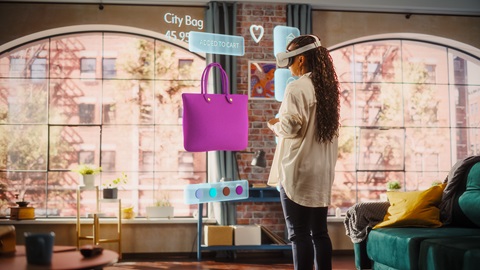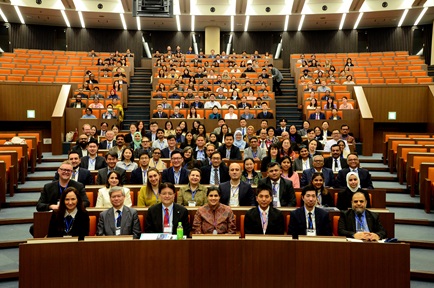The light way to customers’ hearts
As you browse through the latest releases in a quiet bookstore, two books catch your eye: A kiss-and-tell paperback of an infamous politician and a hardcover offering a sober analysis of the global implications from the rise of the said man.
As you browse through the latest releases in a quiet bookstore, two books catch your eye: A kiss-and-tell paperback of an infamous politician and a hardcover offering a sober analysis of the global implications from the rise of the said man.
Which book are you likely to choose: The former, which makes for easy and fun reading on the train, or the latter, which will enhance your understanding of current affairs but requires some serious concentration?
Your ultimate choice may well be determined by the lighting in the bookstore. If it is dimly lit to enhance the store’s cosy setting, you are more likely to follow your heart and opt for the more “enjoyable” gossipy book.
Studies I conducted with my team have found that ambient darkness (as opposed to brightness) can result in consumers feeling disconnected from others. When this happens, consumers will go for the hedonic option, choosing something that they truly want, instead of the utilitarian option, which takes into account of what others might think of their choice.
In retail parlance, hedonic goods — like that monogram bag which can cost an arm and a leg — are known for their fun, delightful and enjoyable properties. Utilitarian products, like that no-frills personal computer, are regarded as necessary and valued for their functional and practical traits.
Our findings have shed new light on what retailers and marketers can do to boost the sales of their products, and may come in handy at a time when Singapore’s retail sector is grappling with its fair share of challenges, from high rentals to poor footfalls.
With shopping malls here often criticised for the cookie-cutter syndrome, “shopping experience” is now widely regarded as key to shaking the retail scene out of its doldrums. And retail atmospherics in a store can certainly make a big difference to the shopping experience.
Of course, the idea that retail atmospherics can act as a critical influence on consumer behaviour is not revolutionary. Background factors in a setting — such as lighting, scent, temperature, sound or music — have long been known to influence the way consumers react to products. Just step into an aromatherapy boutique and all your five senses will be simultaneously activated, making it hard to resist a purchase.
But the studies we conducted went a step further by examining the impact of ambient lighting on consumers’ responses and choices.
In each of our studies conducted with participants from Singapore and the US — involving about 630 men and women altogether — participants were randomly assigned to either a dim or a bright room. In the studies, participants were asked to choose between hedonic and utilitarian options involving different items, such as a stylish chair with modest back support function or a modest chair with superb back support function; or a durable laptop vs a stylish laptop for the home office. One study was conducted with undergraduates from a major Asian university while the other two involved participants recruited from Amazon’s Mechanical Turk online platform.
The findings from the studies showed that ambient darkness can make consumers feel more disconnected from others. Hence, those left in the dark give less weight to what others might expect them to do over what they want to do, because social expectations become less important to them.
In other words, their self-authenticity has been heightened. Self-authenticity in our research was defined as feelings such as being free to decide for yourself how to live your life, or not letting anybody to tell you what to do.
However, this heightened sense of self-authenticity in darkness can be reduced when consumers are reminded about their meaningful connections to others.
With our findings showing that ambient darkness can make consumers feel psychologically distant from others, thus leading them to buy what they really want, retailers may want to use ambient lighting as an affordable means of shaping consumers’ experience and influencing their choice.
For example, a designer wishing to promote her latest line of handcrafted jewellery might want to promote the hedonic product through marketing campaigns that reflect dimmer rather than brighter lighting.
A hardware store selling both hedonic and utilitarian products may want to brighten the section selling hammers and handy tools, but dim the lights in the area offering decorative wallpapers and stickers.
Even for the same product, such as footwear, marketers can design different advertising appeals that emphasise either its utilitarian or hedonic benefits.
For example, relatively dark in-store lighting could boost consumers’ liking for the footwear’s hedonic, rather than utilitarian, value.
As shopping centres along Orchard Road and heartland malls look for ways to set themselves apart from the competition, recalibrating that ambient lighting in their stores may be the way forward as a start.
ABOUT THE AUTHOR:
Xun Irene Huang is an assistant professor of marketing and international business at Nanyang Business School, NTU. Her research on the subject was done in collaboration with Ping Dong and Aparna A Labroo of Kellogg School of Management, Northwestern University.
Source: TODAY Online, 22 April 2018
Similar coverage in Business Insider Singapore, Tech Explorist, Daily Mail online, News.com.au, Channel 8 News and Lianhe Zaobao.







